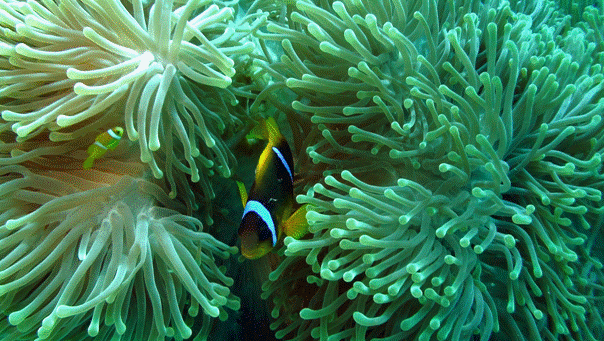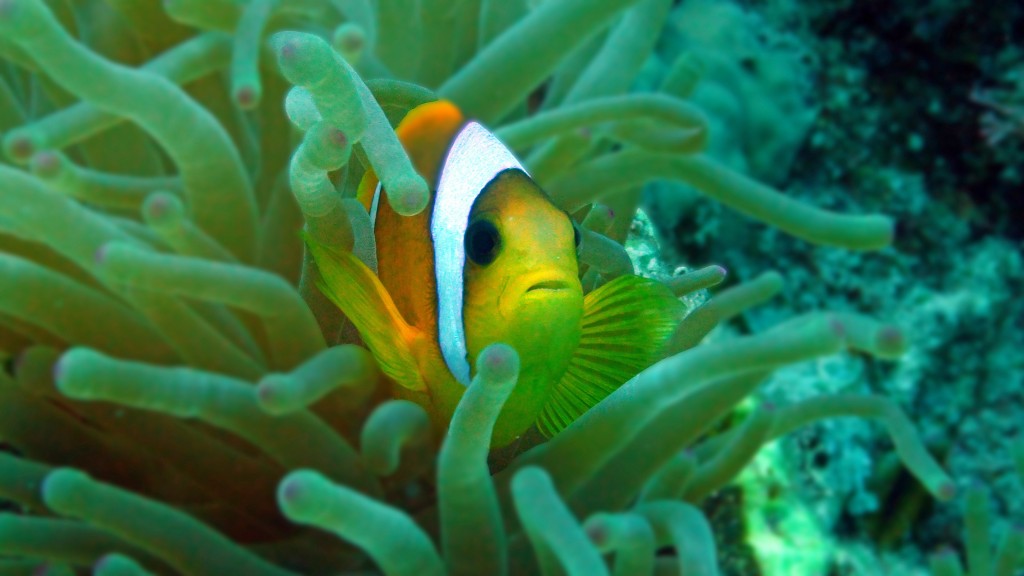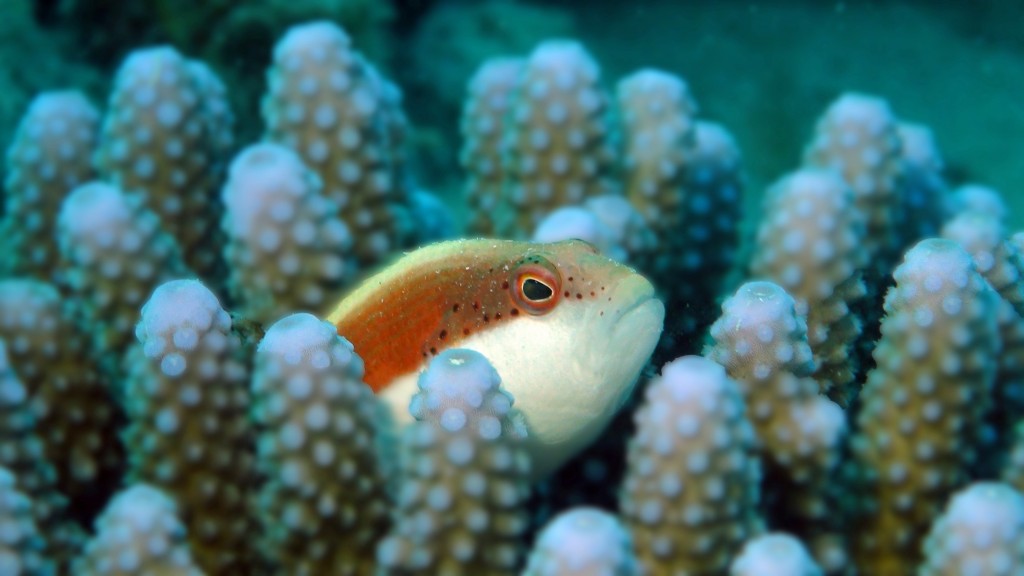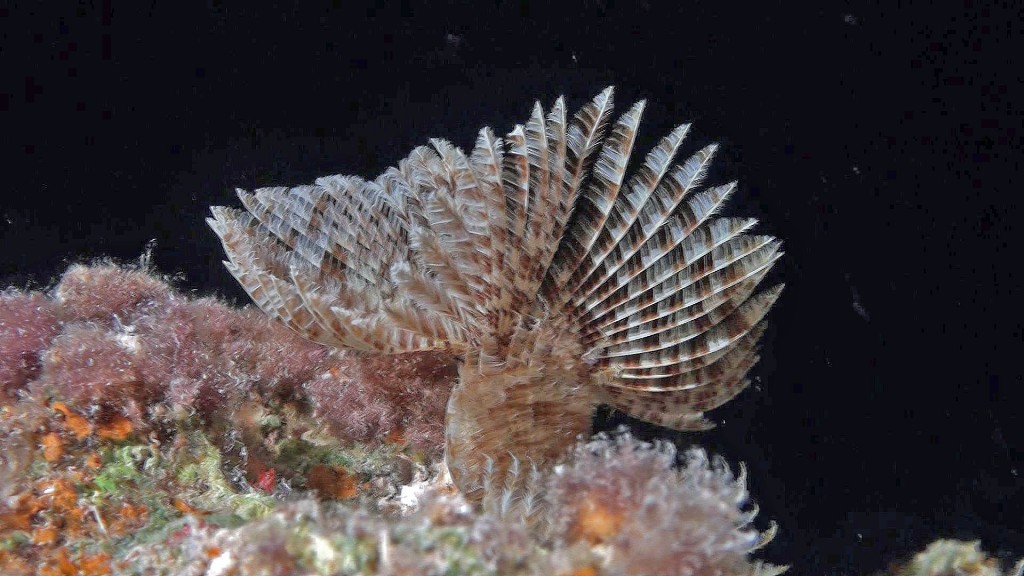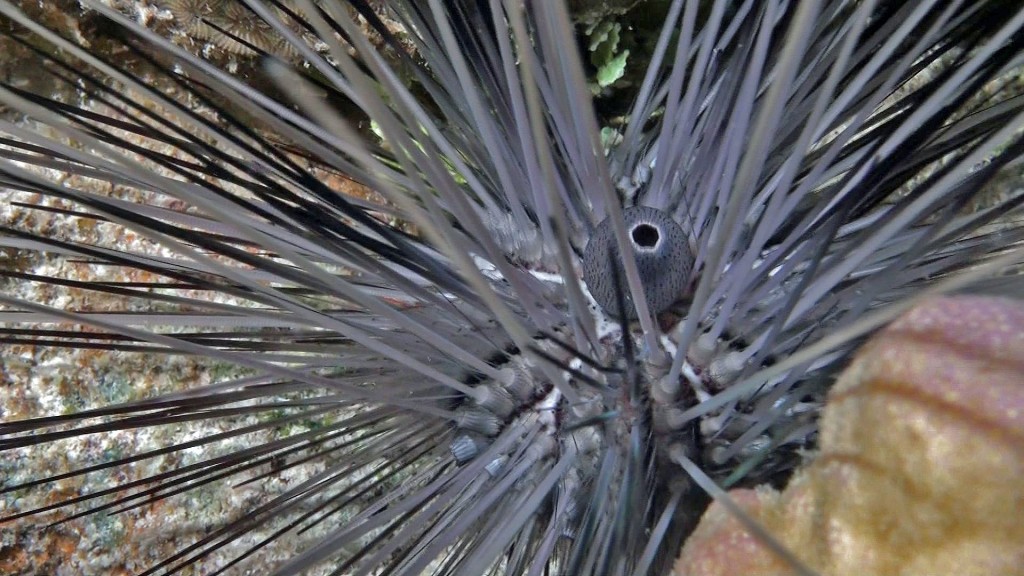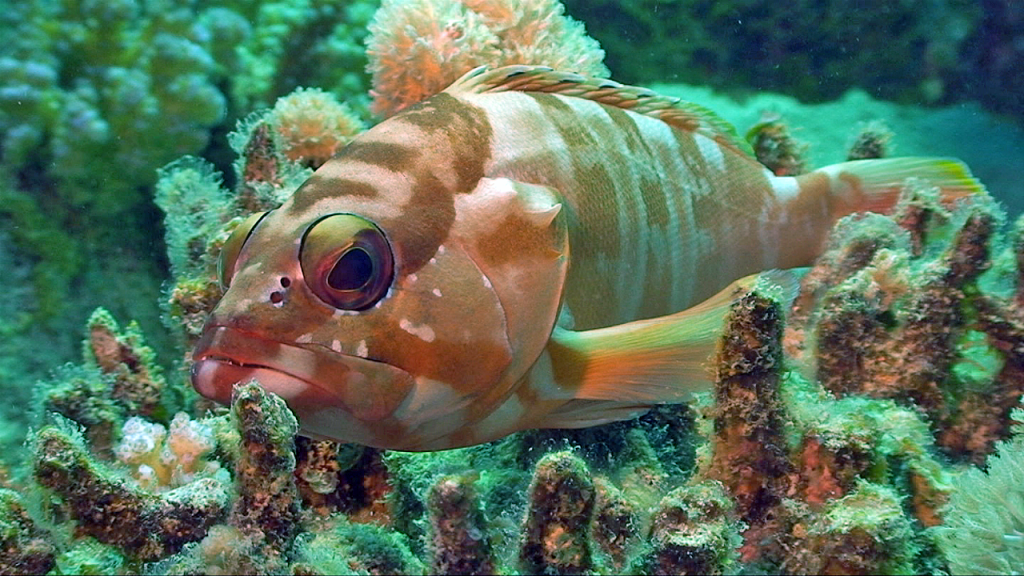News
A Guide to Underwater Wildlife Video & Editing: Part 5
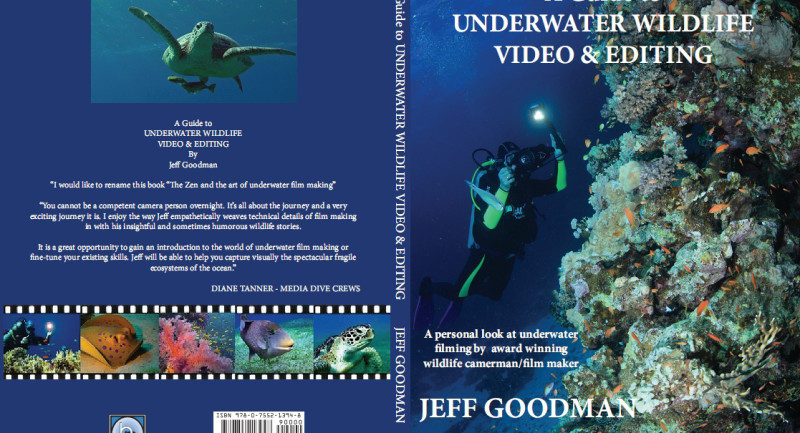
Read Part 4 here.
A part serialisation of a book by Jeff Goodman
PART 5: Focus
Most cameras will have an auto focus mode with the option of switching to manual if desired. Unfortunately not all underwater housings will have the controls to let you access this. Some give you a choice of being able to manually change either focus or exposure. If this is the case then I would highly recommend leaving focus on auto and having full manual control over exposure.
Focus is critical to get right.
A picture can be a little too dark or a little too light, or even a little oddly framed, and still be acceptable to most audiences. But a picture that is even slightly out of focus is very hard to accept.
Auto focus
Professional cameras don’t have this option but most others do. Auto focus is a wonderful piece of technology, but no matter how wonderful, it still doesn’t know what you, as a camera person, actually want to focus on. It will take its ‘best guess’ as to what’s right and that generally is what is biggest and most central to your picture frame.
Let’s look at an example of when auto focus can really mess up your videoing.
You are in open water with a dolphin or two. There are no well defined images in the water except the dolphins themselves. Unless the dolphin is large in the frame the auto focus will have a terrible time trying to find an image to resolve itself on. Without the dolphin as a reference in your monitor you may notice that the auto focus is ‘hunting’ in and out trying to find a subject. Often it will settle on focusing on the small bits of dirt or bubbles on your lens port. (Note – always keep your port clean and check it constantly.)
Then a dolphin comes into frame. Will it be sharp? Who knows, it’s pot luck. If you then stay framed on the dolphin long enough, maybe just a few seconds, the auto focus will recognize the image and be happy. Sadly in those first few seconds of video, which may be the most important, the dolphin may not be sharp. Then as soon as the dolphin leaves frame the auto focus will become worried again and may start looking for a new focal point.
This may seem only a minor problem at the time, but believe me, when you get back into the edit room and look at the video, the first few seconds of out-of focus images will drive you crazy. Hence the advantage here of manual focus which you can set yourself.
For this type of shot with the dolphins it usually works out that wide angle framing is best and thus will have a good depth of field. Preset the focus to around 1 to 2 metres. This will generally give sharp images from the lens port to infinity. A point of reference for the pre-focal point could be one of your fins. Simply point the camera down to you feet and focus on the tip of your fin. A brightly coloured one would be most effective. Perhaps use your dive buddy’s bright tank. This pre focus trick can also work quite well for the auto focus especially if you do it moments before the dolphin enters frame.
With manual focus, although you do have greater control over what is sharp, the difficulty arises when you want to zoom in and alter the frame size. Now the 1-2 meter focal point won’t have enough depth of field and so you will have to adjust your focus to compensate. On zooming in the focus becomes much more critical and will have to reflect the true distance of the subject as the depth of field will now be quite small. We look at depth of field later.
With auto focus, zooming in, as long as you remain on the subject, can be very good, but if you are not already framed up on the subject the auto focus will have a devil of a time trying to resolve the image.

A ‘hunting’ auto focus may give you a ‘soft’ unusable image while all the action is going on regardless.
Here again, as with the dolphin, the auto focus would work very well in a wide angle shot, but as soon as you zoom in to get some close-ups and the depth of field becomes very small, then the clever auto focus is not going to know which part of the frame needs to be kept sharp. The constantly moving fish and also the tentacles of the anemone could keep the auto focus ‘hunting’ throughout your entire shot. Here certainly, the best option is manual focus. If you do not have the option of easily adjusting focus through the housing controls, then keep to the manual option and move the camera in and out slightly as the fish moves, thus keeping it at the correct focal distance. i.e. sharp. There will be many occasions when the auto focus will work just fine and do a brilliant job, but, you are giving over control to an electronic chip. Know it’s limitations.
Not all housings allow you to have full manual control of focus and many don’t allow you to have any control at all. If you only have the auto focus option it’s no problem as long as you are aware of what is going on. With a good clear monitor you can see when a shot is losing focus or not and if it is, then re-think what you are doing and perhaps something as simple as adjusting your shot size will cure the problem.
As we will see later when we discuss editing, it is often desirable to let your subject leave or enter your frame, in this case the clown fish. The downside to this with auto focus is, that as soon as the fish does leave frame, the focus will start hunting for the next best thing to be sharp on. This ‘searching’ even be it for a few moments can look awful and is very different from deliberately changing focus.
So all in all, auto focus is generally very good but can occasionally cause problems which may be acceptable in an amateur video but certainly not in a professional production.
For the lucky ones, some cameras and housings will allow you to change from auto to manual and back again with the flick of a switch or press of a button. Here you have the best of both worlds. Let’s suppose we are filming a turtle on a reef. The first shot you may want to do could be a wide angle and then, adjust shot size, for a close up or two. If there is time, try to zoom right into the turtle and let the auto focus do it’s thing, then flick over to manual focus. The focal distance of the lens will then be locked in place. Now zoom out to the shot size you want and you can be confident that the picture is as sharp as it can possibly be. As the turtle moves you can occasionally, momentarily, flick the auto focus option just to ensure that all is well. How many times you do this is entirely down to your discretion, and lots of practice.
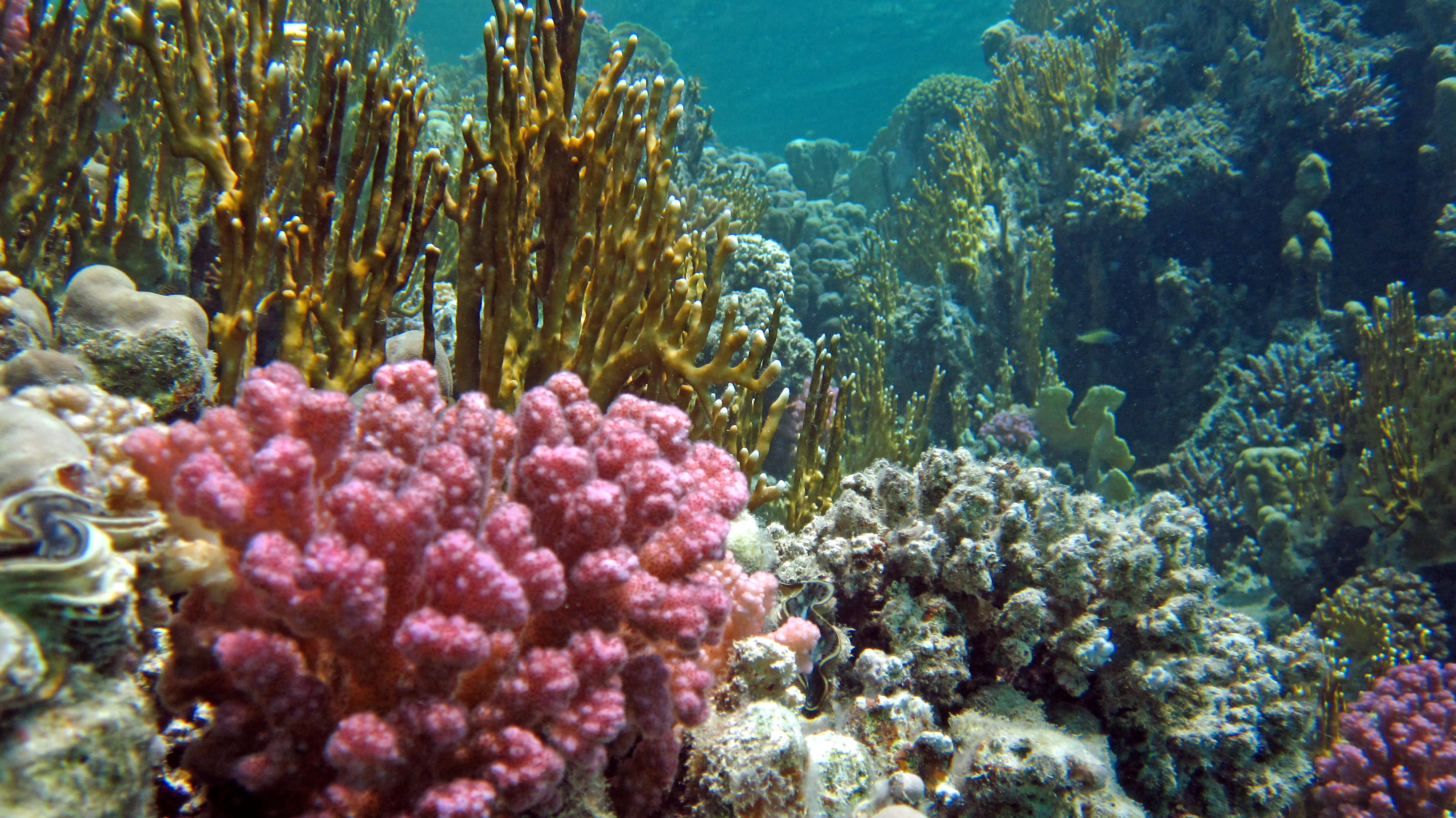
This wide angle image of a reef is spoilt because the auto focus concentrated on the background reef. The red foreground coral is out of focus, even though it is in the key part of the frame.
In the previous example of the coral wide angle, it isn’t of course the fault of the auto focus that the foreground coral is not sharp. You are in charge. Look carefully at what the auto focus is doing. If you don’t like it then turn to manual, re-frame, or don’t do the shot. In this instance it would have been better to have had the red foreground coral sharp, at the expense of the background
Pulling Focus
Pulling focus from one subject to another can be very dramatic, but is mostly effective on long lens shots or at the longer end of your zoom. As we are underwater and most of our videoing is done with a wide angle, pulling focus is not something that is used much at all. However, it can be effective when shooting in close up or macro mode. Here auto focus is next to useless as the shot size and framing will remain constant throughout and the auto focus has no idea that you want to alter the focal point from one part of the frame to another. We definitely want the manual focus option, which needs to be very smooth in its operation, otherwise it will look amateurish.
Next month we look at Lenses, Depth of Field and Angle of Coverage.
Blogs
Discover Curaçao with the Ultimate Dive Vacation Guide – 2024 DEMA Special Edition

Dive Travel Curaçao is thrilled to announce the launch of the Curaçao Dive Vacation Guide – 2024 DEMA Special Edition, an expertly curated resource that unveils the unparalleled dive experiences and vacation possibilities awaiting you in Curaçao. Produced exclusively for the Diving Equipment & Marketing Association (DEMA) Show 2024, this special edition guide is packed with exclusive insights, travel tips, and limited-time DEMA offers that make it easier than ever to explore Curaçao’s stunning underwater landscapes and vibrant culture.
Explore Curaçao’s Unmatched Diving Opportunities
With over 70 diverse dive sites along its southern coastline, Curaçao is a bucket-list destination for divers of all experience levels. From thriving coral reefs and intricate marine ecosystems to historic shipwrecks, the island offers a variety of underwater experiences that are hard to match. The Curaçao Dive Vacation Guide – 2024 DEMA Special Edition provides detailed recommendations for both shore and boat diving, making it a valuable tool for divers seeking the best entry points, pristine reefs, and hidden treasures along the coastline. Whether you are an avid wreck diver, or a beginner interested in shallow reefs, Curaçao has it all.

Uncover Eco-Friendly Dive Resorts and Top Dive Operators
This DEMA 2024-exclusive Curaçao guide goes beyond diving to feature insider information on Curaçao’s eco-friendly accommodations, dive resorts, and top-rated dive operators committed to sustainable dive tourism. From all-inclusive resorts that support coral reef restoration initiatives to charming boutique hotels near prime dive locations, the guide helps travelers find the ideal stay to match their vacation goals. It also spotlights trusted dive operators on the island who prioritize environmental preservation, offering travelers a way to enjoy the underwater world responsibly.

Immerse Yourself in Curaçao’s Culture, Culinary Delights, and Adventure
Curaçao offers a vibrant Caribbean culture rich in history, music, and culinary fusion. The guide reveals Curaçao’s hidden gems, including culinary hotspots, historical sites, and eco-tourism opportunities that will appeal to both divers and non-divers. Visitors can explore the island’s iconic architecture, savor a diverse range of dishes influenced by Caribbean, European, and South American flavors, and embark on land-based eco-adventures, such as hiking, cave exploration, and visiting national parks.

Exclusive DEMA 2024 Specials and Limited-Time Dive Packages
This special edition guide features limited-time DEMA 2024 offers on dive packages, accommodations, and excursions. Travelers who book through Dive Travel Curaçao, or our Curaçao dive travel partners attending DEMA, will have access to exclusive discounts on custom dive vacation packages, making it easier to plan an affordable, high-quality dive trip that fits your preferences. The Curaçao Dive Vacation Guide – 2024 DEMA Special Edition is designed to simplify your travel planning and help you dive deeper into the incredible experiences that Curaçao has to offer.
It’s Time to Dive Curaçao!
Now is the time to discover why Curaçao is a top dive destination in the Caribbean! Dive Travel Curaçao invites you to experience an unforgettable dive vacation with exclusive DEMA 2024 specials tailored just for you. To secure your spot, download a copy of the Curaçao Dive Vacation Guide – 2024 DEMA Special Edition and contact the Dive Travel Curaçao team to start customizing your Caribbean dive adventure today.
For more information and bookings, please visit Dive Curaçao’s website or contact our reservations team directly.

News
Santa Divers take the Plunge for Charity

Ho Ho Ho! Vobster Quay’s recording-breaking charity Santa diving event returns on Sunday 15th December 2024 for another round of festive fundraising frivolities. Run in aid of the Royal National Lifeboat Institution (RNLI) and Help For Heroes, this ever-popular annual fundraising event aims to raise sack-loads of cash for these two very deserving charities.
Divers of all levels are invited to grab their Santa outfits – and as much festive cheer as they can muster – and head down to Vobster Quay near Mells, Somerset for a mass sponsored Santa dive in aid of charity. In previous years, the event has attracted divers from the far corners of the UK to join in the festive merriment for a final festive dive before the Christmas and New Year break. Back in 2015, the event smashed the world record for the most Santa divers with 188 divers taking to the waters donning their festive finery – a record that remains unbeaten to this day!

Vobster Santas isn’t just about setting records – it’s also about raising some serious cash for charity. Vobster Quay encourages all divers to get into the spirit of the season to raise much-needed funds for two very deserving charities – the Royal National Lifeboat Institution (RNLI) and Help For Heroes.
Through individual sponsorship and online donations, divers can invite their friends, family and work colleagues to sponsor them to plunge into the balmy waters of Vobster Quay dressed in full festive finery. Since the very first Santa dive in 2007, the event has raised over £52,000 for charity. “It’s been over 17 years since the very first charity Santa dive took place at Vobster Quay and every year the event just keeps getting bigger and better” enthused Vobster Quay owner, Amy Stanton.
“Vobster Santas is a great way for divers to say a massive thank you to the both the RNLI and Help For Heroes – two very deserving charities close to our hearts. We’re immensely proud of all that Vobster Santas has achieved and hope that even more divers will join this year’s event on Sunday 15th December. I’m confident that we can make Vobster Santas 2024 the biggest yet!”.
Divers wishing to participate can get involved by simply registering their attendance at
www.vobster.com/event-vobstersantas.php.

-

 News1 month ago
News1 month agoIconic SS United States to become the World’s Largest Artificial Reef
-

 Blogs3 months ago
Blogs3 months agoNovoScuba’s Game-Changing Approach for Dive Store Owners: WE PAY YOU!
-

 News2 months ago
News2 months agoBook Review – 52 Assignments: Underwater Photography
-

 Gear News2 months ago
Gear News2 months agoDYNAMICNORD – New German diving brand enters the British market
-

 News2 months ago
News2 months agoExploring Cenote El Pit: A Diver’s Dream
-

 Gear News2 months ago
Gear News2 months agoTry BARE drysuits (and maybe even win one!) this Friday with Sea & Sea at North West Dive Fest
-

 News3 months ago
News3 months agoComing Soon – 52 Assignments
-

 Marine Life & Conservation2 months ago
Marine Life & Conservation2 months agoBook Review: Coral Triangle Cameos






